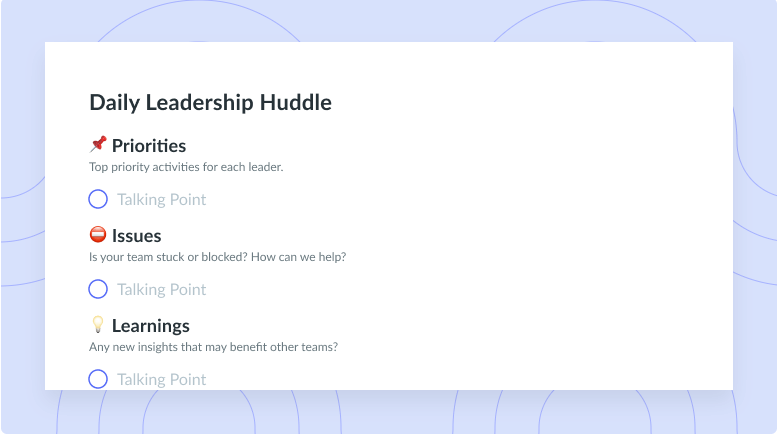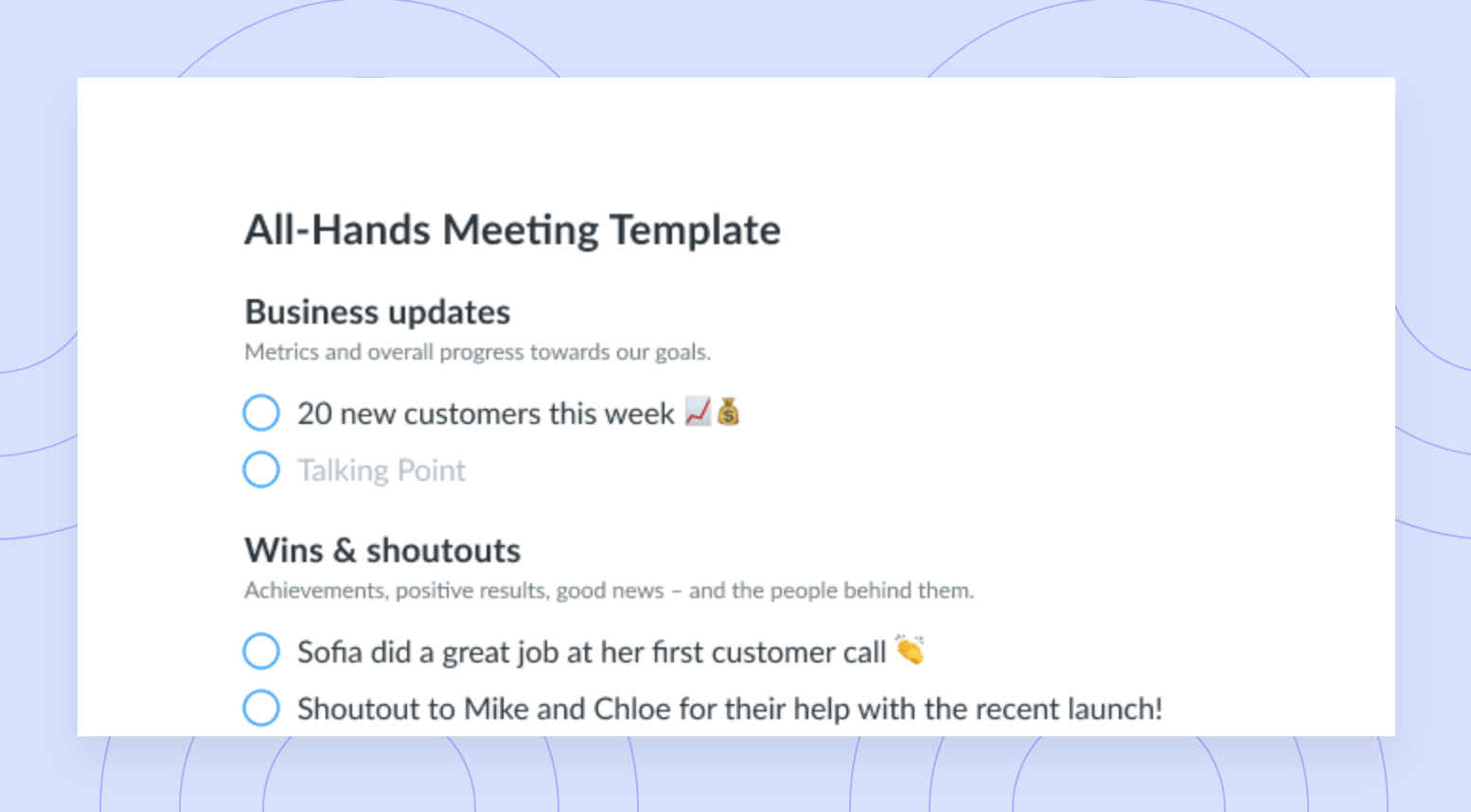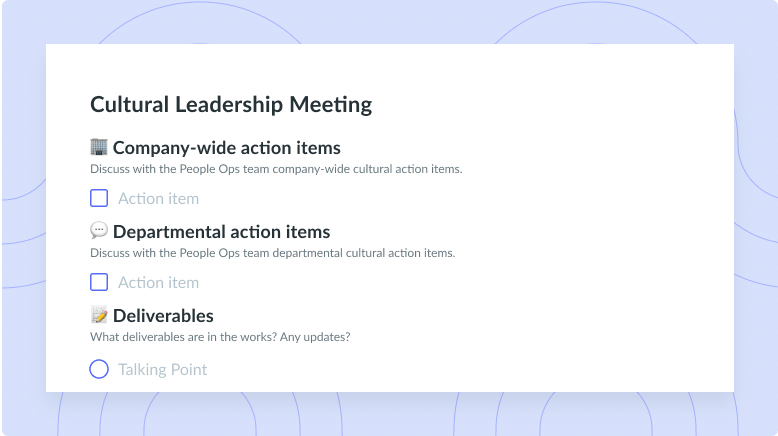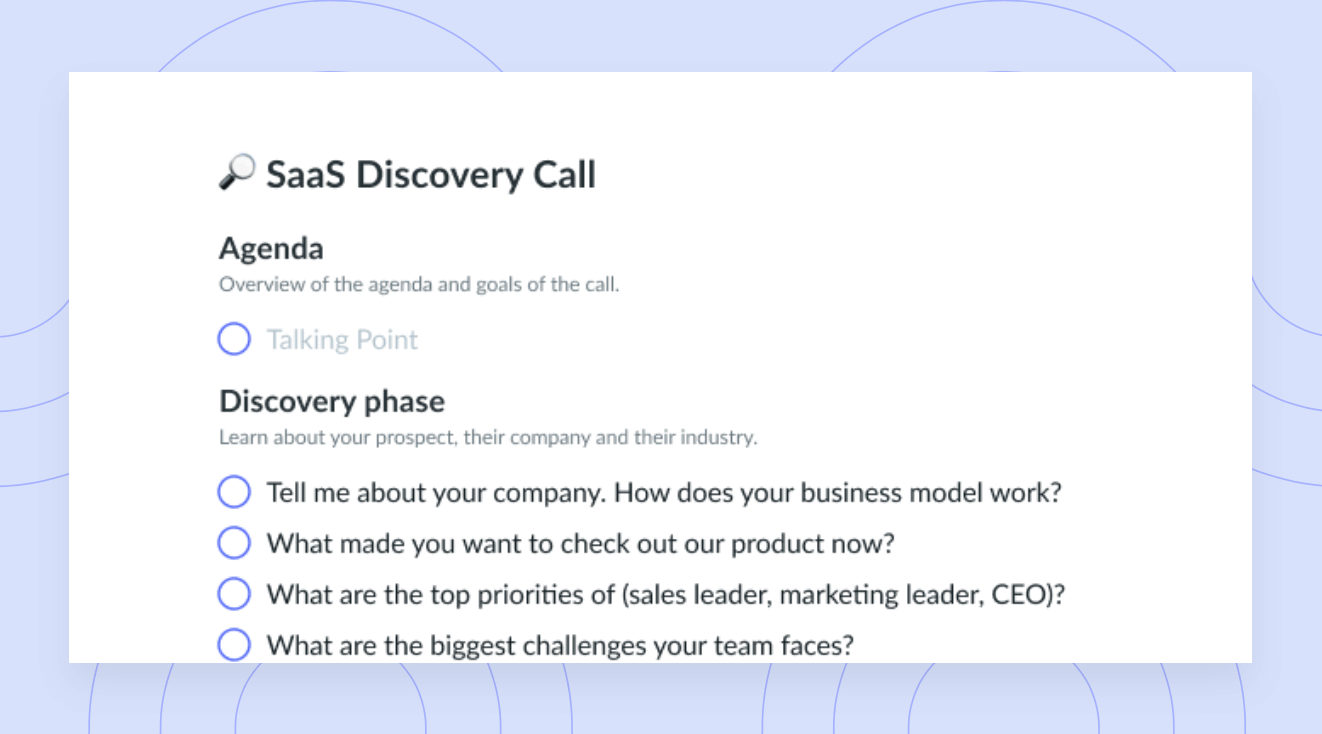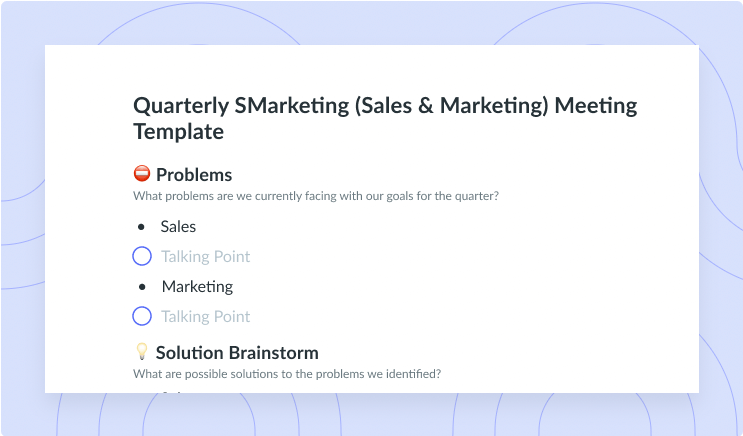What Is the Pyramid of Clarity?
Learn how to implement the pyramid of clarity and leverage it to foster alignment and create cohesion among your team here!
Whether it be for building a product road map or a business plan, the pyramid of clarity is an excellent resource that can be used to foster alignment and demonstrate how long-term aspirations are built on short-term goals. In this article, we’ll define the pyramid of clarity while teaching you about the three types of clarity in addition to tips you can leverage when using the pyramid of clarity to foster alignment.
- What is the pyramid of clarity?
- What are the three types of clarity?
- Benefits of using a pyramid of clarity
- How to implement the pyramid of clarity
- Tips for maintaining the pyramid of clarity over time
What is the pyramid of clarity?
The pyramid of clarity is a simple hierarchy of mission, strategies, objectives, and key results. This hierarchy or process intends to outline how to achieve strategic alignment and is often used to align team members with a higher purpose or greater organizational goals. Leveraging the pyramid of clarity will help break down daily processes and tasks while demonstrating how short-term goals play a role in longer-term aspirations. This process can be used to help teammates stay on the same page, build confidence in long-term goals or aspirations, and help individuals make decisions that align with the big picture.
What are the three types of clarity?
1Clarity of plan
Clarity of plan refers to the degree to which a plan or strategy is understood. This means that the plan is well-defined, easily understood, and able to be executed. Having clarity of plan is essential when fostering alignment. All stakeholders must understand the objectives and tasks involved so they can work as a collective to achieve the desired outcome.
Clarity of plan becomes especially important during high-stake situations, such as an emergency response. Take the COVID-19 pandemic for example. Many organizations were forced to pivot and create a clear path forward. Creating a clear plan helped them minimize confusion, reduce errors, and increase the likelihood of success when the cards were stacked against them.
2Clarity of purpose
Clarity of purpose refers to the level of clarity one has as they pertain to their goals and intentions. Someone who has clarity of purpose will have a clear direction when moving forward. They will understand what they’re working towards as well as the purpose and meaning of their actions, decisions, and choices. Having clarity of purpose can help minimize stress, improve decision-making, and maintain focus and motivation.
Clarity of purpose will prove to be important in many areas of your life, including career planning, personal development, and goal setting. By having a clear sense of purpose, you can make more informed choices about your career, education, and personal life. If you understand what you want to achieve, why it matters to you, and how you’ll go about achieving it, you have clarity of purpose.
3Clarity of responsibility
Clarity of responsibility refers to the degree to which a collective or individual understands their role and responsibilities within a certain context. Clarity of responsibility involves having a clear understanding of what is expected of you, what your responsibilities are, and how your actions or contributions will play a role in the overall objectives as defined by your team, organization, or community.
By clearly defining each person’s responsibilities, you’ll be able to ensure that everyone is on the same page, reducing misunderstandings, conflicts, and errors that may arise as a result of overlapping responsibilities or unclear instructions.

Run efficient meetings, come to a decision, and get back to work
Level up your meeting habits to boost engagement and productivity with a collaborative meeting agenda. Try a tool like Fellow!

Benefits of using a pyramid of clarity
The benefits of leveraging a pyramid of clarity are bountiful and second to none. Not only are you able to foster alignment and cohesion among your team, but you’ll also help your teammates focus on what matters most. Gone are the days of having conflicting priorities or miscommunicating among your peers; leveraging the pyramid of clarity will help your team stay aligned and on track during turbulent times.
Additional benefits include:
- Creating a framework for clear and effective communication among teammates, peers, and superiors
- Providing a foundation created on the premise of continuous improvement and perpetual development
- Ensuring all team members understand the organization’s goals and how they contribute to the success of the organization
- Enabling leaders to make more informed business decisions based on timely and accurate information
- Encouraging accountability and ownership among teammates
How to implement the pyramid of clarity
- Define objectives
- Set key results
- Determine initiatives
- Define tasks
- Communicate and align
- Review and adjust
- Celebrate wins
1Define objectives
The first step to implementing the pyramid of clarity is clearly defining your objectives. To keep things simple, you can begin by defining high-level objectives that you want to achieve as a team. From there, you can get more granular. When defining your objectives, it’s important to make sure each objective is specific, measurable, and aligns with your organization’s goals.
Objectives are competitive goals supported by key results that outline the steps needed to achieve the goal. In Fellow, you can stay on top of your goals by recording, defining, and tracking the progress of OKRs in Fellow’s Objectives tool. Each objective has an assignee, a due date, a status, progress, and the related key results, meaning everything is easy to set up and track. To get started, simply create a new objective in Fellow.
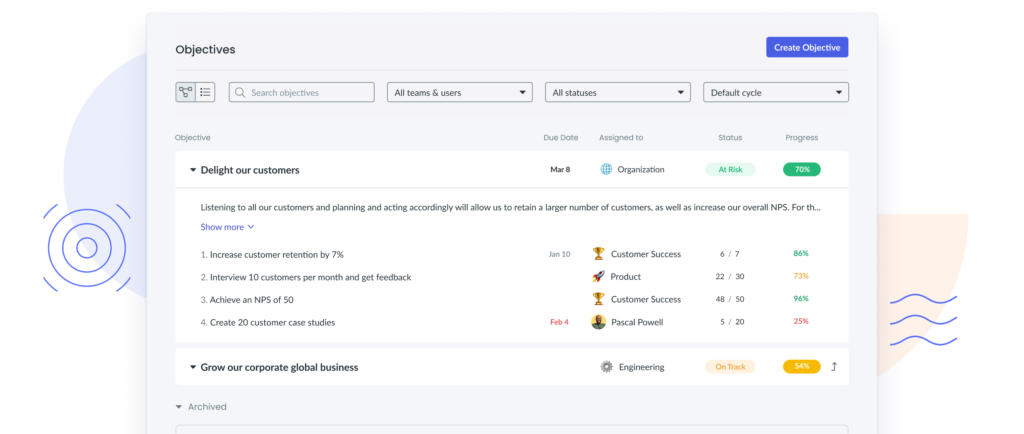
2Set key results
After you’ve clearly defined each of your objectives, you can get to work setting specific key results that will help you measure progress as it relates to each objective. Similar to your objectives, each key result must be specific, measurable, achievable, relevant, and time-bound.
3Determine initiatives
After you’ve defined your objectives and set your key results, it’s time to determine which initiatives can be associated with each one. During this process, you’ll identify the specific initiatives or projects that you’ll undertake to achieve your key results.
4Define tasks
This step is where you’ll start to get your hands dirty. During this step, you’ll break down each initiative and identify which tasks must be completed within each initiative. When defining your tasks, it’s important to note that they must be actionable and measurable while contributing to the overall success of your initiatives and key results.
Fellow makes it easy to visualize and organize your upcoming tasks in the action items section, so you can focus on your priorities and start each day feeling in control. Struggling to keep your team on track? With Fellow’s carry-forward functionality, all of your incomplete action items automatically roll forward to your next meeting for easy review.
5Communicate and align
Share the pyramid of clarity with your team and ensure that everyone understands how it works. Make sure that everyone is clear on their roles and responsibilities, and that they understand how their work contributes to the team’s objectives and key results.
6Review and adjust
It’s natural to have to make iterations along the way, which is why it’s important to allocate time to review and adjust the pyramid. It’s important to regularly review progress and adjust your approach as needed. When doing so, you can leverage the pyramid of clarity to identify areas that may be falling short so you can make adjustments to your initiatives and tasks to get back on track.
7Celebrate wins
Never underestimate the power of celebrating the wins! You can leverage the pyramid of clarity to measure your progress and identify areas in which your team has excelled. If you’ve made significant progress, it’s important to take the time to celebrate as a team. Doing so will help your team stay motivated, on track, and focused. Pro tip: Boost morale by making your wins visible to your entire team by creating a “wins” section in your meeting agenda in Fellow!
Tips for maintaining the pyramid of clarity over time
1Review it regularly
Plans change over time, so it’s important to prioritize regular reviews. Setting aside time to review your plans and goals will ensure you’re able to make adjustments as needed. Doing so will help make sure everyone is on track and working towards specific goals and objectives. This is also a great opportunity to reiterate how stakeholders are contributing to team goals.
2Keep it visible
Keeping the pyramid of clarity visible is a great way to keep it top of mind. If everyone can visualize what needs to be done, they will be more inclined to work within those parameters as opposed to straying from the end goal.
3Encourage feedback
Giving and receiving feedback is key when striving to maintain the pyramid of clarity over time. Providing and encouraging feedback will help identify areas that may need improvement, meaning you can collaborate on a solution moving forward. To obtain feedback, it’s important to create a culture where feedback flows freely. You don’t want employees or stakeholders to feel as though they can’t provide honest feedback. With Fellow, you can share real-time feedback on meetings, projects, and performance to build a culture of continuous feedback!

4Train new team members
Providing training and development opportunities will help ensure that everyone has the tools, resources, and knowledge necessary to perform to the best of their abilities. If you speculate that your team may not be equipped to sustain the pyramid of clarity over time, it may be because they haven’t received the appropriate training.
Are you ready to put the pyramid of clarity into practice?
Are you ready to leverage the pyramid of clarity to foster alignment and level up communication within your organization? You officially have everything you need to kick things off and get started on the right foot! Don’t forget to check out the Fellow blog for more tips and best practices!



![Productive OKR Weekly Check-ins [+ FREE Template]](https://fellow.app/wp-content/uploads/2022/05/OKR-Weekly-Check-in.jpg)






